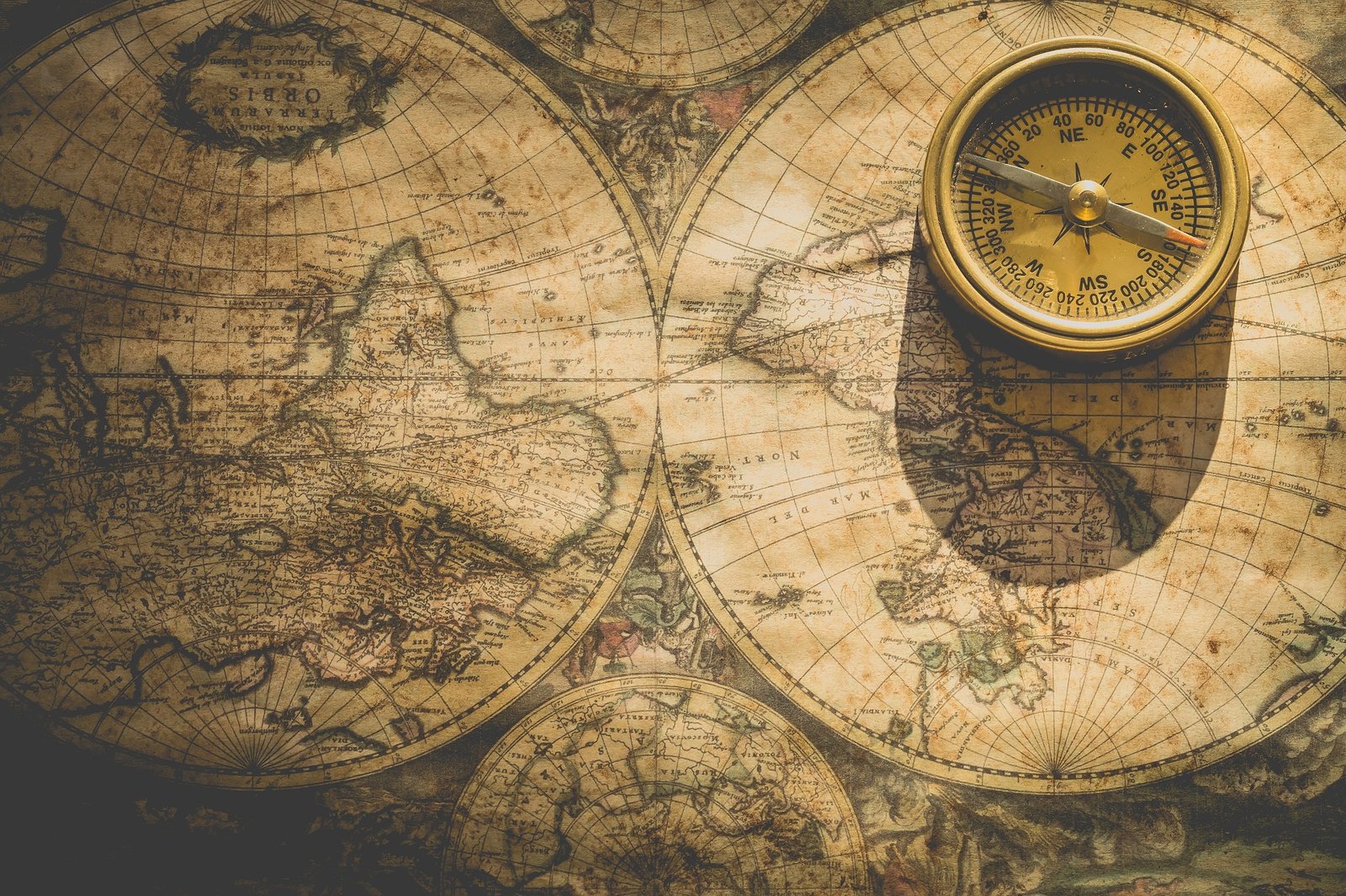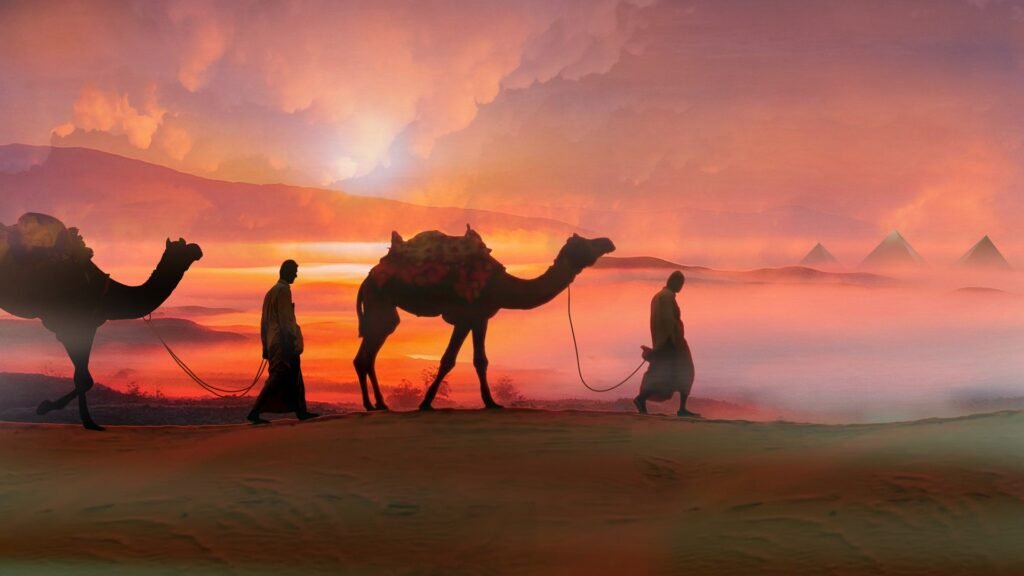Introduction
In the annals of time, where shadows whisper ancient tales and winds carry the scent of forgotten epochs, lies the mesmerizing story of incense. Picture this: a primordial temple, awash with the first light of dawn, as the sun peeks timidly over the horizon. In the heart of this temple, a priest gently fans the flames of a delicate brazier. From it rises a fragrant cloud – the sweet, heady aroma of burning incense. This scent is not merely a pleasure for the senses. It’s a bridge, a sacred tether connecting the earthly realm to the divine. Get yourself ready to explore the most famous incense trails out there.

Sacred Importance
The ancients believed that incense was the very breath of the gods. In Egypt, the sun god Ra was said to have created incense as a salve for the tears of the other deities. These fragrant offerings were a dialogue, a wordless prayer rising to the heavens. From the misty peaks of Machu Picchu to the grand temples of India, from the ziggurats of Mesopotamia to the silent sanctuaries of Japan, incense wafted its fragrant tendrils, wrapping every ceremony, prayer, and rite in its mystical embrace.
Yet, like many divine things, incense wasn’t content with just staying in the temples. It began to travel, embarking on what would become some of the most famous incense trails, merging the divine with the material.
Trade and Economy
With the rustle of silk, the clinking of coins, and the steady plod of camels’ feet, incense began its journey from the remote corners of its origin to bustling markets worldwide. It became as valuable as gold, a luxury sought by kings and nobles. Its trade routes, kissed by desert sands and caressed by sea breezes, became the lifelines of ancient economies. They bore witness to tales of adventure, treachery, hope, and love.
Incense, it seems, was not just a scent but the very essence of a time when the world was vast and full of wonders a

Ancient Incense Routes: Mapping the Fragrant Paths
As our journey unfolds, it’s essential to understand that incense wasn’t merely a traded commodity; it was the beating heart of ancient global networks. Among these, the most famous incense trails defined the ebb and flow of civilizations. These trails weren’t just about commerce; they were arteries of cultural exchange, knowledge transmission, and even political intrigue.
Overview
Imagine a vast canvas, stretched from the distant reaches of the East to the sun-kissed lands of the West. Now, etch upon this canvas a complex maze of trails, shimmering like a spider’s web under the morning dew. These are the incense routes, a vast network crisscrossing through arid deserts, lofty mountain passes, dense forests, and cerulean seas. Among these, the most famous incense trails held significance beyond what one might imagine.
The most audacious of traders embarked on these trails, armed with not just wares, but tales from their homeland, knowledge of their crafts, and the insatiable thirst for the unknown. These routes were the ancient internet, connecting civilizations, catalyzing the exchange of ideas, and fostering the spirit of cosmopolitanism.
Navigational Marvels
Traveling these trails was not for the faint-hearted. The Frankincense route, for instance, required caravans to brave the blistering heat of the Arabian desert, trusting oases as their lifelines. Meanwhile, the Maritime Silk Road, which complemented the famous overland Silk Road, saw doughty mariners navigating perilous waters, relying on the rhythm of the monsoons and the whisper of the stars for guidance.
Yet, with every challenge came innovation. Desert traders learned the art of conserving water, while mariners perfected the craft of celestial navigation. These routes were schools in their own right, churning out not just merchants but geographers, astronomers, and philosophers.
Stops Along the Way
Each stop along these trails was like a chapter in a sprawling epic. The bustling markets of Petra, with their grand rose-red facades, were a testament to the prosperity brought by the incense trade. The ancient port of Muscat echoed with tales of seafarers from distant lands. And then there were the silent monasteries atop the Himalayas, where incense accompanied monks in their meditative sojourns.
Most Notable Incense Trails: Deep Dives
As the echoes of ancient chants blend with the melodies of bustling bazaars, our journey takes us deeper into the heart of the legendary pathways, where incense was more than a fragrant resin; it was the lifeblood of civilizations.

Frankincense Trail
The trail of gold – not the gold that glitters, but the gold that wafts, that envelopes, that serenades the senses. The Frankincense Trail remains one of the most enduring symbols of the ancient world’s quest for the ethereal.
- Origins: Beginning in the rugged terrains of the Horn of Africa and the mysterious depths of the Arabian Peninsula, this trail was the bedrock of the incense trade. The sap of the Boswellia tree, once tapped and hardened, gave birth to the cherished frankincense.
- Journey Through Sands: Caravans, sometimes hundreds of camels strong, would trudge through scorching deserts, facing sandstorms and mirages, all for the precious cargo they bore. Oasis towns like Shabwah and Ubar flourished, serving as rest stops and trade hubs for these tireless travelers.
- Kingdoms and Empires: The trail wasn’t merely a trade route; it was a geopolitical marvel. Kingdoms like the Nabateans, with their iconic capital Petra, controlled and profited immensely from the frankincense trade, transforming them into regional superpowers.
The Silk Road and Its Fragrant Trail
Beyond the vast stretches of sand and dunes lay another trail, often overshadowed by silk but just as intoxicating in its allure. This is the tale of the Incense Route of the Silk Road.
- From Spice to Incense: Though silk gets the headline, incense and spices formed a significant part of the trade along these routes, connecting the East to the West. The agarwood and sandalwood from the East found eager buyers in the bustling markets of Samarkand and beyond.
- Cultural Confluence: As merchants traveled with their fragrant wares, they also became ambassadors of culture. Buddhism, Zoroastrianism, and later Islam, spread their wings along this very route, intertwining spirituality with commerce.
The Indian Ocean Maritime Incense Route
While caravans dominated the terrestrial, dhows and ships ruled the waves. The maritime incense route was an aquatic ballet of trade, risk, and exploration.
- Navigating the Monsoons: Sailors hailing from the Arabian coasts to the Malabar shores of India had a secret ally – the monsoons. These seasonal winds were the engines propelling ships laden with frankincense, myrrh, and spices across the cerulean expanse.
- Port Cities and Coastal Hubs: Places like Muscat in Oman, Aden in Yemen, and Cochin in India shimmered as the pearls of this route. They were melting pots of culture, where a Roman trader could very well be haggling with a Chinese merchant.

Impact of the Incense Trade on Modern Culture and Spirituality
Emerging from the dusky veils of history, these most famous incense trails, while no longer thrumming with camels and caravans, still resonate deeply in our collective psyche. The fragrant footprints of the past have seamlessly intertwined with the tapestry of our present, leaving behind an enduring legacy.
Legacy in Modern Rituals
- The Scents of Spirituality: Walk into any contemporary yoga studio or meditation center across the globe, and you’re greeted by the gentle waft of incense. From palo santo to agarwood, the ancient aromas have found their way into our modern sanctuaries. They bridge the millennia, grounding us and elevating our spirits simultaneously.
- A Home’s Silent Companion: Beyond the sacred, incense has established itself as an ambient presence in homes. It purifies, brings tranquility, and often serves as a gentle reminder of ancestral traditions and familial ties.

Cultural Footprints
- Festivals and Celebrations: The silhouette of a priest swinging a censer is not a sight restricted to ancient texts. Be it the Christian ceremonies during Easter, the Hindu rituals during Diwali, or the serene air of a Buddhist temple, incense continues to play a pivotal role in festivities and rites across cultures.
- Art and Expression: Contemporary artists, poets, and musicians frequently allude to the mystique of incense. It serves as a muse, an emblem of nostalgia, passion, and the ethereal.
Modern Trade Dynamics
- A Flourishing Industry: Today, the incense trade is a multi-billion dollar industry. While the romance of ancient caravans may be missing, the logistics, research, and global networking involved are equally fascinating. Brands vie to source sustainably, innovate with blends, and cater to a discerning clientele that spans the globe.
- Challenges and Sustainability: The demand for certain types of incense, like agarwood or sandalwood, has raised concerns regarding sustainability and ethical sourcing. This has led to a movement towards plantation-grown sources and research into sustainable harvesting methods.
Conclusion:
The Timeless Essence of Incense Trails
From the enigmatic caravanserai of yesteryears to the sleek e-commerce platforms of today, the journey of incense is a testament to its timeless allure. It’s more than just a fragrant smoke; it’s a narrative, a history, an emotion. It encapsulates the human spirit’s boundless quest for connection – with the divine, with nature, and with one another.
As we conclude this aromatic voyage, let’s light a stick of incense, letting its tendrils of smoke rise and dance, and in that delicate ballet, find echoes of ancient trails, timeless tales, and the eternal rhythm of humanity.





